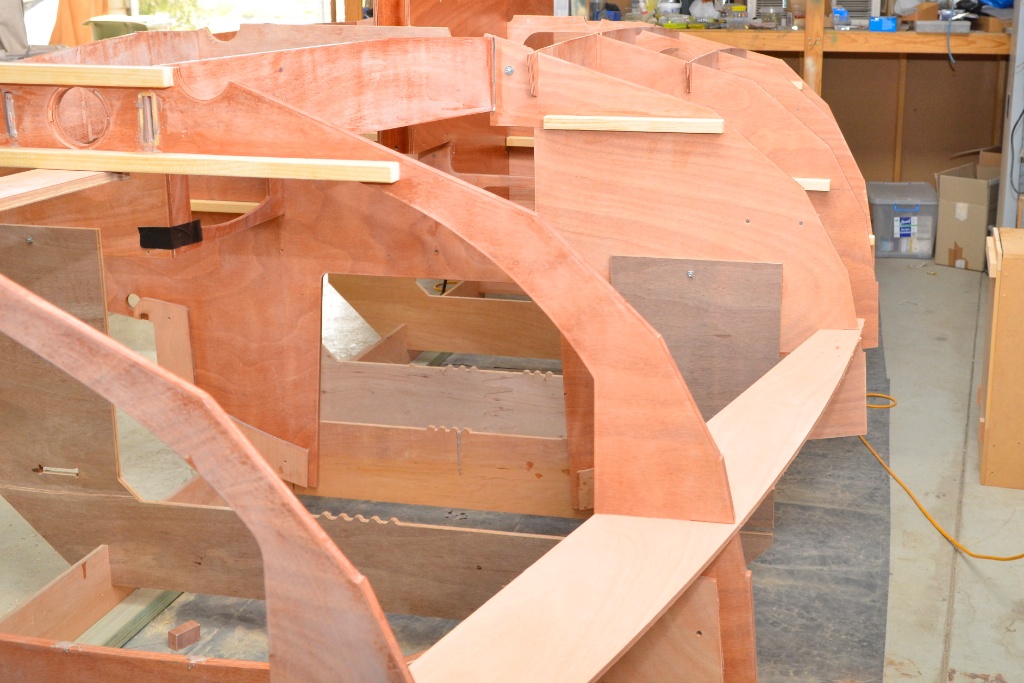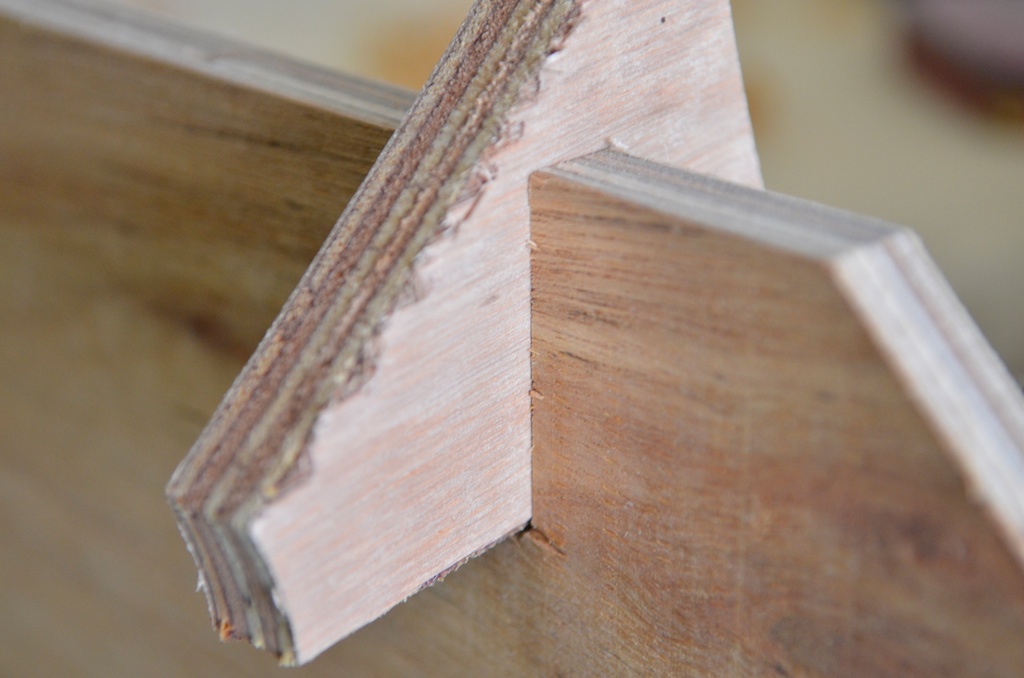Planking cont.
tony o'connor
With the garboards fitted and glassed, the rest of the planks are fitted in the usual manner.
Plank no.2 fitted, the wooden blocks sticking out from the frames are for the plank to rest on while fitting.
Planking continues with each plank sealed and sanded on the inside and each of the scarfs glassed on the inside also.
Plank 3 prepared for fitting
Fitting fourth plank, the wooden clamp helps to hold the edges together, small screws are also used.
Monday 28th. 4th planks on both sides fitted. Hopefully if I don't have too many distractions for the rest of the week I will be able to get the final planks on by the end of the month.
Final plank, Thursday 31st.
Side view showing wooden plank clamps and supports for the plank.
Next day with clamps removed.
Now that the final plank is fitted the next job is to fill screw holes, fair planks, fit outer stem, fllet the plank edges to the adjoining plank and then start to undercoat the hull. The plan is to prime and undercoat the hull , then turn the hull over and do the fitting out, the final coat will be applied when the fitout is complete.





















